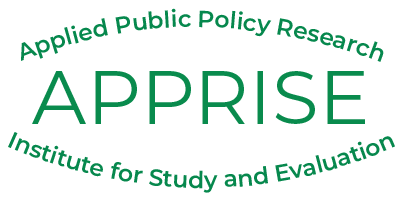RESOURCE LIBRARY
APPRISE Projects
Non-Energy Impact Research
APPRISE conducted a study on the non-energy benefits (NEBs) of the Energy Savings Assistance (ESA) Program. The ESA Program provides no-cost weatherization and energy efficiency measures to achieve energy savings and improved health, comfort and safety for low-income households served by the IOUs in CA. This study reviewed the NEBs proposed in a previous study and developed a streamlined model for estimating the value of the NEBs.
The 2004 Colorado REACh grant developed a comprehensive cooling program to assist Colorado’s low-income households. Local agency partners implemented cooling program services, including equipment installation and client education, and the state LIHEAP office furnished community-wide education and notification services. APPRISE conducted a comprehensive Process and Impact Evaluation of this program.
APPRISE conducted research for the Connecticut Energy Efficiency Board to explore existing NEI values nationally, regionally, and for CT; gaps in existing CT NEI data; and survey research and data analysis that can address NEI measurement. The study explored and assessed the current state of the art for measuring NEIs both nationally and regionally, where and how NEIs are used in calculating the cost-effectiveness of energy efficiency programs, how the inclusion of NEIs has impacted energy efficiency programs across the U.S., the best available estimates of the NEIs for CT programs and measures, and how NEIs could be measured and incorporated in future CT evaluations.
This project is a partnership between the New York State Energy Research and Development Authority (NYSERDA) and the New York State Department of Health (NYS DOH). The Pilot seeks to deliver residential healthy homes interventions to 500 households in targeted regions of New York State over a two-year period. The intervention is comprised of energy efficiency/weatherization measures, environmental trigger reduction measures, and home injury prevention measures. The intervention includes in-home visits from energy efficiency professionals and a Registered Nurse, and the assignment of a Community Health Worker to support each household. APPRISE is advising NYSERDA on the evaluation of this initiative and implementing pre/post participant and comparison group surveys to assess the impact of the program on occupant health, comfort, and safety.
Ohio’s Department of Development, Office of Community Services, was awarded a REACh grant to research how to provide additional resources to low-income weatherization services in a way that addresses the more comprehensive needs of low-income households. These funds were used to assess the in-home environmental health risks for vulnerable individuals, prioritize usage reduction measures to meet the energy and health needs of vulnerable individuals, and provide additional measures that enhance the health and safety of the home. The program also established a partnership with vulnerable households to take actions to mitigate the environmental health risks in the home and refer clients to other services that can improve the health of the home and the clients who live there. APPRISE conducted a process and impact evaluation of this project.
Energy efficiency programs have significant impacts in addition to the energy savings they achieve, including economic, environmental, and participant impacts. The Non-Energy Impact (NEI) literature extends back for a few decades, but there are many challenges with the research. While there are hundreds of reports that cover NEIs from energy efficiency programs, many are dated and most do not calculate benefits that are specific to the program and jurisdiction studied. This study aimed to overcome several of these issues by conducting a survey with participants in the program studied; performing rigorous sample design, implementation, weighting, and analysis; obtaining high survey response rates; and providing transparency regarding methods, potential issues, and limitations. The study focused on five specific participant NEIs achieved through one market rate and one low-income energy efficiency program. The winter comfort, summer comfort, health, safety, and noise impacts were measured through three different survey-based approaches, results across approaches were compared, and recommendations were made with respect to the preferred methodology and additional research that is needed.
